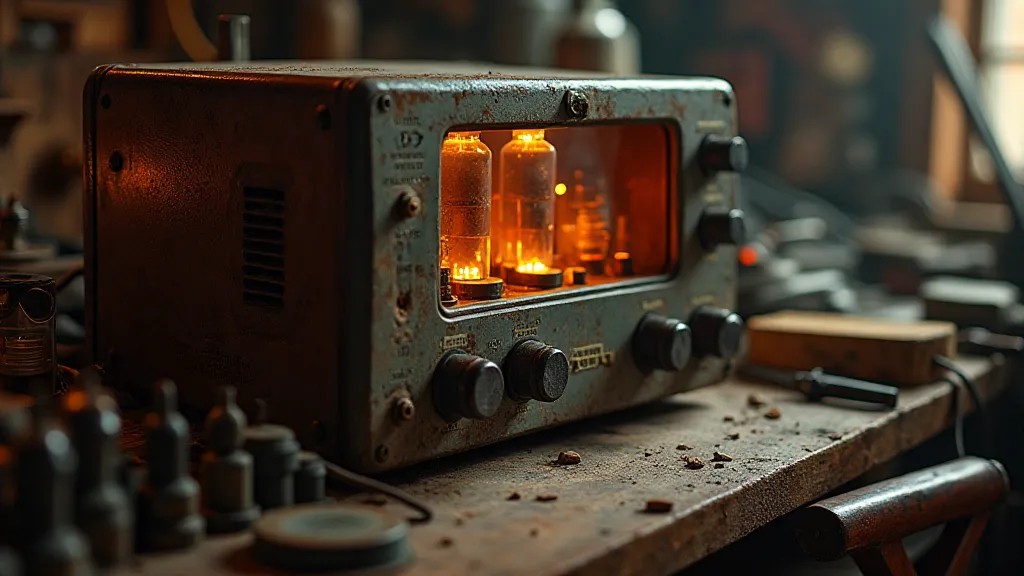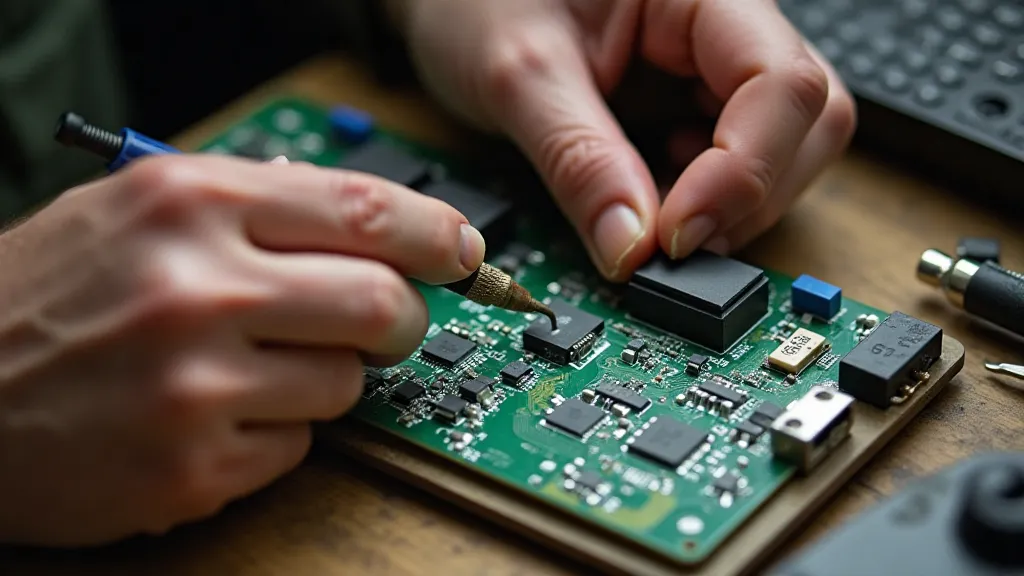The Geometry of Signals: Antenna Design and the Dance of Electromagnetic Waves
There’s a certain magic in witnessing a forgotten craft reawakened. I recall the first time I encountered a vintage accordion – a Hohner Monarch, lovingly restored by an elderly gentleman in my town. The bellows, once stiff and lifeless, moved with a sigh, the reeds sang a melancholic tune, and the sheer artistry of its construction – the meticulous carving, the precisely fitted keys, the intricate mechanism – filled me with a profound sense of awe. It spoke of a time when things were built to last, when craftsmanship wasn’t a forgotten ideal, but a tangible reality. Building a ham radio transceiver, and specifically understanding its antenna, evokes a similar feeling. It's a return to fundamentals, a hands-on exploration of principles that underpin our ability to communicate across vast distances.
Radio communication, at its heart, is a dance. A dance of electromagnetic waves, traveling at the speed of light, interacting with metal structures we call antennas. And just like a skilled accordionist coaxing a haunting melody from a complex instrument, we, as radio enthusiasts, need to understand the geometry of this dance – the specific shapes and configurations that maximize its beauty and power.

The Electromagnetic Spectrum and the Foundation of Radio
Before we delve into antenna design, let’s briefly touch upon the electromagnetic spectrum. It’s a vast range of frequencies, from incredibly low frequencies used for long-distance communication to extremely high frequencies utilized in medical imaging and astronomy. Radio frequencies, the domain of ham radio, fall within a relatively narrow band. Within that band, different frequencies behave differently. Lower frequencies travel further, bending around obstacles more effectively, while higher frequencies can carry more data but are more susceptible to blockage.
Consider a tuning fork. When struck, it vibrates at a specific frequency, producing a clear, sustained tone. Similarly, an antenna, when properly tuned to a specific frequency, resonates, efficiently transmitting or receiving radio waves. The entire process – the design, the construction, the tuning – demands a level of patience and persistence, qualities that are invaluable in any hands-on project. Sometimes, the challenges can seem daunting, but the rewards of overcoming those hurdles are truly significant, as detailed in The Patience of Persistence: Overcoming Challenges in DIY Radio.
Antennas: More Than Just Wires
An antenna isn't simply a piece of wire. It’s an engineered structure designed to efficiently radiate or intercept electromagnetic energy. Think of it like this: the accordion’s reeds vibrate to create sound. An antenna vibrates (electromagnetically) to either broadcast or receive radio signals. The shape, size, and orientation of the antenna are critical to its performance. A poorly designed antenna will perform like a muffled accordion—the signal will be weak, distorted, and frustrating to use.
The simplest antenna is a dipole – essentially, a straight wire, cut in half and fed with the radio signal. The length of this dipole is directly related to the wavelength of the radio waves it's designed to transmit or receive. A good rule of thumb is that the ideal length of a dipole antenna is roughly half the wavelength of the radio frequency you’re working with. Calculating wavelength involves dividing the speed of light (approximately 300 million meters per second) by the frequency. This basic understanding of wavelength is fundamental to antenna design. This design isn't about following instructions blindly; it's about understanding the underlying principles and adapting them to specific needs, a philosophy also embraced in the open-source community, as demonstrated by The Echo of Innovation: Adapting Open-Source Transceiver Designs.
Resonance and Impedance: The Sweet Spot
When an antenna resonates, it’s operating at its most efficient. Resonance is like finding the perfect pressure point on an accordion – a subtle adjustment that unlocks the instrument's full potential. Just as an accordionist needs to carefully press and release the bellows, we need to ensure our antenna’s impedance (its resistance to the flow of alternating current) matches the impedance of the radio transmitter or receiver. A mismatch causes reflected power – energy that doesn’t radiate and can even damage the equipment. This is where the concept of SWR (Standing Wave Ratio) comes into play - a numerical representation of this impedance match. Achieving this balance often requires careful consideration of the entire system, from the antenna itself to the interconnected subsystems. Many enthusiasts choose to build modular designs for increased flexibility and ease of troubleshooting, a concept explored in detail in The Silent Symphony of Subsystems: Modular Design in Transceiver Construction. These modular systems are a reflection of the intricate and interconnected nature of the radio transmission and reception process.

Different Antenna Designs: Expanding the Possibilities
The dipole is just the beginning. There’s a universe of antenna designs, each with its own strengths and weaknesses. Yagi-Uda antennas, with their directional gain, are like focused spotlights, allowing you to "listen" in a specific direction. Loop antennas, with their ability to reject local interference, offer a level of clarity comparable to a perfectly tuned accordion, effortlessly cutting through the noise. Vertical antennas offer good omnidirectional coverage. Each type requires a different level of understanding and calculation, but the fundamental principles remain the same: manipulating the geometry to maximize signal strength and clarity.
The choice of antenna also depends on available space and desired performance. Living in an apartment might restrict you to a compact indoor antenna, while a rural setting allows for a larger, more powerful setup. The challenge often lies in creatively adapting these principles to your unique environment. And beyond the technical aspects, there’s a profound connection to the history and legacy of radio, a journey that often involves listening for humanity’s voices across the spectrum, as explored in Static and Stories: Listening for Humanity in the Radio Spectrum.
Beyond the Technical: The Human Element
The dedication required for amateur radio isn's solely about understanding electronics or mastering physics. It's also about perseverance, and the ability to find joy in the process of discovery, even when faced with setbacks. Like a musician meticulously practicing a complex concerto, the amateur radio enthusiast refines their skills and knowledge over time. The radio waves themselves carry echoes of the past, whispers of long-distance conversations and moments of human connection. These connections often transcend geographical boundaries, fostering a sense of community among enthusiasts worldwide.
Advanced Considerations: Impedance Matching and Noise Rejection
As we progress in our understanding of antennas, we often encounter more complex challenges, such as impedance matching and noise rejection. Impedance matching is the process of ensuring that the antenna’s impedance is compatible with the transmitter or receiver’s impedance. This prevents reflected power and maximizes efficiency. Noise rejection, on the other hand, involves minimizing unwanted signals that can interfere with the desired signal. This can be achieved through various techniques, such as shielding and filtering.
The Future of Antenna Design
The field of antenna design continues to evolve rapidly, driven by advances in technology and the ever-increasing demand for wireless communication. New materials, such as metamaterials, are being explored to create antennas with unprecedented performance characteristics. Furthermore, the development of software-defined radios (SDRs) is enabling greater flexibility and programmability in antenna design. As we move towards a more connected world, the importance of antenna design will only continue to grow.
Conclusion: A Journey of Discovery
Building and tuning an antenna is often an iterative process. It's rarely a matter of simply plugging in a pre-built antenna and expecting perfect results. It requires experimentation, observation, and a willingness to learn from your mistakes. The satisfaction of finally coaxing a strong signal from a home-built antenna is a deeply rewarding experience—akin to the joy of a skilled musician mastering a difficult piece.
This journey mirrors the restoration of that vintage accordion. It's not simply about reassembling the parts; it's about understanding how they interact, diagnosing problems, and bringing the instrument back to life. It's about appreciating the skill and dedication of the original craftsman. Similarly, understanding and building antennas reveals the elegance and power of radio communication.
The beauty of amateur radio isn't just in the ability to talk to people across continents; it’s in the journey of discovery – the exploration of technology, the appreciation of craftsmanship, and the connection to a community of passionate enthusiasts. And at the heart of that journey lies the geometry of signals—the dance of electromagnetic waves that connects us all.






